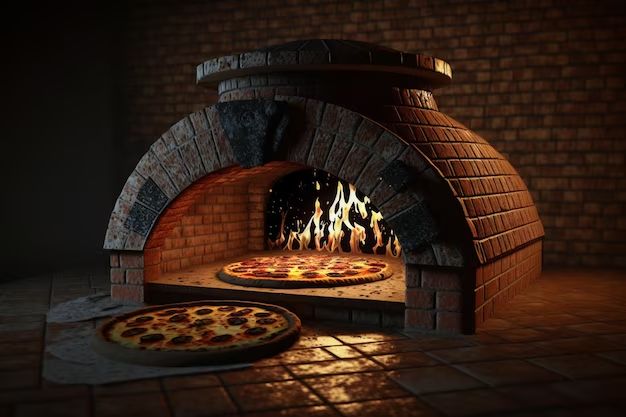Having a fireplace and a pizza oven are two great ways to enhance your home. A fireplace provides warmth and ambiance, while a pizza oven allows you to make delicious homemade pizzas. But what if you don’t have room for both? Here are some things to consider if you’re looking to combine a fireplace and pizza oven into one.
Page Contents
How They Work
First, it’s important to understand how both a fireplace and pizza oven work. Fireplaces are designed to provide radiant heat by burning wood. The smoke and exhaust from the fire goes up through the chimney. Pizza ovens also burn wood as fuel, but are designed for quick, high heat in order to cook pizza. The oven is lined with thermal mass materials like stone, which absorb and distribute the heat. Many pizza ovens also have a chimney or flue system for ventilation.
Cooking Method Differences
The main difference between a fireplace and pizza oven is in their cooking methods:
- Fireplaces use indirect radiant heat primarily for warmth.
- Pizza ovens use direct and indirect heat focused on cooking.
This means that simply putting a baking stone in your fireplace will not make a very good pizza oven. The heat is too inconsistent and uncontrolled. So how can the two be combined successfully?
Design Considerations
When combining a fireplace and pizza oven, there are some important design factors to consider:
Placement
The oven should be placed at the back or side of the fireplace, so that it does not interfere with the fire view. It can be its own separate chamber or integrated into part of the existing fireplace.
Materials
Use heat-resistant materials like fire bricks or high-temperature concrete. The oven ceiling/dome should be insulated well. The oven floor should have thermal mass like stone or clay tiles.
Ventilation
Proper ventilation is crucial, likely requiring a chimney connection for both the fireplace and oven. The oven vent should have a damper to control airflow.
Temperature
The oven needs consistent high temperatures up to 700-800°F. This may require modifications to the fireplace combustion chamber.
Design Options
There are a few common design configurations for combining a fireplace and pizza oven:
Side-by-Side
The oven is built as a separate structure next to the fireplace. This allows both to function independently and is easiest to build. But it takes up more space.
| Pros | Cons |
|---|---|
| Easier, less custom construction | Takes up more space |
| Fireplace and oven operate independently | Not as aesthetically integrated |
Over/Under
The oven is built above or below the fireplace. This stacked layout saves space while integrating the two.
| Pros | Cons |
|---|---|
| Saves floor space | Oven access may be less convenient |
| Looks integrated | Heat transfer could be difficult |
Attached
The oven is designed as an extension on the back or side of the existing fireplace. This can make use of dead space in some fireplace designs.
| Pros | Cons |
|---|---|
| Uses existing structure | Limited space for oven size |
| Saves space | May reduce fireplace opening |
Construction Process
If you’re taking on this project yourself, be prepared for a complex construction process. Here are the basic steps:
- Design the oven size and layout.
- Modify the existing fireplace as needed.
- Install high-temperature bricks or concrete for the oven floor and dome.
- Add insulation between oven and fireplace.
- Install the oven door and chimney connection.
- Test for proper ventilation and temperature.
- Apply oven rendering like stucco.
- Add oven accessories like a thermometer.
Be sure to follow proper safety precautions when modifying your existing fireplace. Unless you have masonry experience, it’s best to hire a professional for construction. The oven also needs very precise dimensions to heat correctly.
Usage and Maintenance
Once built, your combo fireplace-oven can provide the benefits of both:
- Use the fireplace for ambiance and heating your space.
- Use the oven for making pizza and other dishes at 700°F+ temps.
- Manage the shared chimney system with dampers for proper ventilation.
- Perform annual maintenance and cleaning on the oven and fireplace.
You’ll need to learn specialized wood firing techniques for best results. Optimal oven temperature and airflow control are key. But your homemade pizzas will taste so much better! Just be careful not to burn yourself while cooking in a live fire.
Conclusion
Combining a fireplace and pizza oven is certainly possible with careful planning and construction. The result is a multifunctional fireplace that provides warmth, ambiance, and cooking capabilities. Just be prepared for higher costs and a complex installation. For many homeowners who love to entertain and cook pizza, the end result can be well worth the investment.

